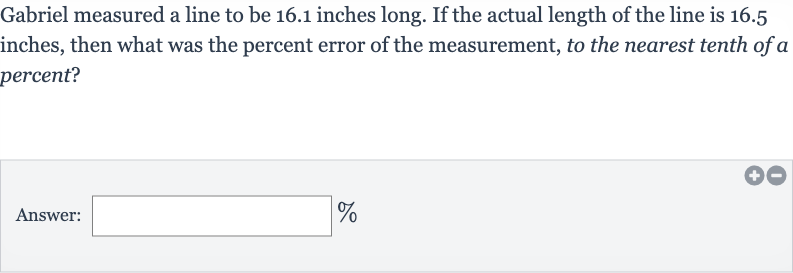AI tutor
Welcome to Bytelearn!
Let’s check out your problem:

Gabriel measured a line to be . inches long. If the actual length of the line is . inches, then what was the percent error of the measurement, to the nearest tenth of a percent?Answer: _______
Full solution
Q. Gabriel measured a line to be . inches long. If the actual length of the line is . inches, then what was the percent error of the measurement, to the nearest tenth of a percent?Answer: _______
- Understand Percent Error: Understand the concept of percent error. Percent error is a measure of how inaccurate a measurement is, compared to the true value. The formula for percent error is: Percent Error =
- Identify Values: Identify the measured value and the true value from the problem.Measured Value = inchesTrue Value = inches
- Calculate Absolute Difference: Calculate the absolute difference between the measured value and the true value.Absolute Difference = Absolute Difference = Absolute Difference = Absolute Difference = inches
- Calculate Percent Error: Calculate the percent error using the formula.Percent Error = Percent Error =
- Perform Division and Multiplication: Perform the division and multiplication to find the percent error.Percent Error = Percent Error Percent Error
- Round Percent Error: Round the percent error to the nearest tenth of a percent.Percent Error
More problems from Percent error: word problems
QuestionGet tutor help
QuestionGet tutor help
QuestionGet tutor help
QuestionGet tutor help
QuestionGet tutor help
